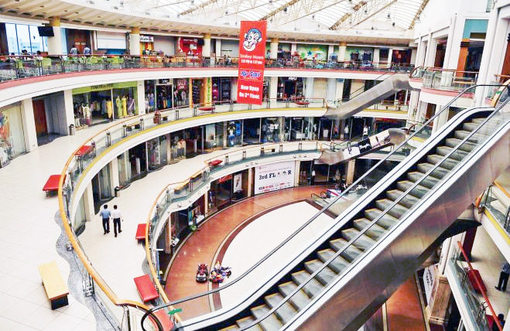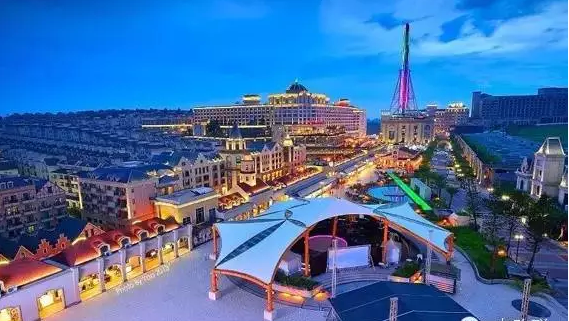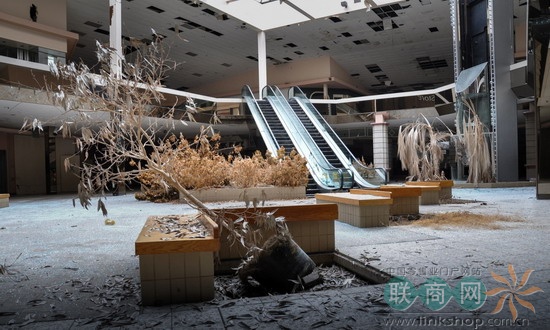歐洲購物中心的發展——繼續繁榮
來源:
聯商網
2008-05-13 13:07
Shopping Center Development in Europe
歐洲購物中心的發展
The Boom Goes On
——繼續繁榮
Neville Moss*
尼維爾·莫斯
歐洲購物中心的發展
The Boom Goes On
——繼續繁榮
Neville Moss*
尼維爾·莫斯
Abstract: Europe is currently experiencing an unprecedented boom in shopping-center development. Neville Moss, Head of Retail Research at Jones Lang LaSalle, looks for the main action, examines the reasons behind the surge in activity in Russia and Turkey, and sketches the prospects for new development around the region.
摘要:歐洲目前正經歷著前所未有的蓬勃發展購物中心,在Jones Lang LaSalle 零售研究負責人內維爾·莫斯(Neville Moss),觀察了主要的行動,剖析在俄羅斯和土耳其十分活躍背后的理由,,勾勒出周邊地區新的發展的前景。
Some 50 years after Europe’s first shopping centers were built, development is booming as never before. The year 2005 was a record one, with some 4.5 million square meters (sq m) (1 square meter = 10.8 square feet) of new space completed, and 2006 was even higher with 5.2 million sq m. That is because within Europe,countries have evolved at a very different pace. Most of the shopping centers in Western Europe were built in the 1970s and 1980s. Southern Europe came to the fore in the 1990s closely followed by Central Europe (Poland, Czech Republic and Hungary) but it is now the time for the large and underdeveloped markets of Eastern Europe.
歐洲的首個購物中心建成約50 年后,蓬勃發展是前所未有的。2005 年創下了歷史紀錄,約有450 萬平方米 ( 1 平方米= 10.8 平方英尺)新的空間完工,并在2006 年還有更高的520 萬平方米。這是因為歐洲國家之間已經形成了非常不同的步調。大部分西歐的購物中心建于 20 世紀70 年代和80 年代,南歐在90 年代,緊隨其后的是中歐國家(波蘭,捷克共和國和匈牙利) ,但現在是大而欠發達的東歐時代。
Russia Most Active Market
俄羅斯是最活躍的市場
Russia was by far the most active market last year, with 1.4 million sq m opening in 36 schemes. Italy (0.61 million sq m) and Spain (0.57 million sq m), were the second- and third most active markets, followed by Germany, Turkey and Poland.
去年,俄羅斯是目前最活躍的市場,有36 個項目140 萬平方米開業。意大利( 61 萬平方米),西班牙( 57萬平方米) ,分別是第二位和第三位活躍的市場,然后是德國、土耳其和波蘭。
The next two years are expected to see more of the same, with a record supply of new shopping-center space planned. Russia has the largest development pipeline by some margin, with approximately 4 million sq m due for completion in 2007-08 (see Chart 10-1).
今后兩年,預期仍會看到更多的創紀錄的新的購物中心規劃空間。兼并是俄羅斯最大的開發途徑,約有400 萬平方米預計在2007-08 年度完成(見圖10-1 )。
Turkey is next with 2.2 million sq m, just ahead of Italy (also 2.2 million sq m) and Poland (1.9 million sq m).The reason for Russia’s upsurge in development is its recent economic success. The Russian economy has grown at almost 7% a year since 1999, helped by the high price of oil and natural gas. The retail sector has been central to this success story and has received strong government support, including the removal of the sales tax and introduction of a flat rate income tax of just 13%. And with incomes growing by 10% a year since 2002, the boom in the Russian retail market is nothing short of breathtaking. More amazing still is that consumer credit became available only a few years ago and has already risen to US$40 billion. But this is barely 5% of gross domestic product (GDP) and is just one tenth of Western European levels, suggesting that the consumer boom has a long way to run.
接下來是土耳其220萬平方米,略高于意大利(也是220萬平方米)和波蘭(190萬平方米) .俄羅斯的高速發展得原因是其近期的經濟成就。1999年以來,俄羅斯經濟增長近7% ,得益于高油價和天然氣。零售業已處于這個成功的中心地位,并得到政府的大力支持,包括取消銷售稅,并實行單一的所得稅率僅13 %。2002年以來,每年收入增長10% ,蓬勃發展的俄羅斯零售市場簡直令人贊嘆。更加令人驚奇的仍然是消費信貸僅在幾年前應用,已上升到400億美元。但這僅僅是GDP的5%,只是西歐國家的水平的十分之一。這表明消費增長尚有很大的空間。
Moscow has been the main focus for shopping center development and international retailer expansion, but developers and retailers are now targeting other regions. In 2006, IKEA developed five additional malls under its Mega Mall brand: one in Yekaterinburg (90,000 sq m); another in Nizhniy Novgorod (97,000 sq m); one in Moscow (115,000 sq m) and two in St Petersburg (128,000 sq m and 98,000 sq m).
莫斯科一直是開發購物中心和國際零售商擴張的熱點。但是,現在開發商和零售商正瞄準其他地區。2006 年,宜家以它下屬的“百萬摩爾”(Mega Mall)的品牌開發了的5 個商場。一個在葉卡捷琳堡( 9 萬平方米);另一在諾夫哥羅德(9.7 萬平方米) ;一個在莫斯科( 11.5 萬平方米)和兩個在圣彼得堡( 12.8 萬平方米和9.8 萬平方米) 。
Russia’s Regional Cities Have the Largest Short Term Development Potential
俄羅斯區域性城市,擁有最大的短期發展潛力
In the Millionniki (11 regional cities with a population of one million and over), stock is expected to rise from 1 million sq m today to 3.4 million sq m by 2008. Samara, Nizhniy Novgorod, Kazan and Yekaterinburg remain the retail hotspots, but Novosibirsk, Ufa and Rostov will also see strong retail provision growth. The Moscow development market remains buoyant, however, and includes the 80,000 sq m Metropolis. Due in 2008, it is one of the first malls geared toward the wealthier shopper.
在Millionniki ( 11 個區域性城市的人口在100 萬以上) ,通常可望從現在的100 萬平方米上升至2008年的340 萬平方米。薩馬拉、諾夫哥羅德、喀山和葉卡捷琳堡保持為零售的熱區。但新西伯利亞,、烏法和羅斯托夫還會見到強勁的零售業供應量的增長。然而,莫斯科開發市場仍然蓬勃增長,包括應在2008 年的8萬平方米的Metropolis。它是第一個面向富人購物者的摩爾。
In Turkey, a Young and Fast-growing Population is Driving Retail Growth
一個年輕的人口迅速增長的土耳其推動零售業的增長
Turkey is also booming, and is one of the fastest growing and largest emerging economies. The population of 74 million will grow faster than any other European country over the next five years, and the principal city of Istanbul, one of Europe’s four ‘mega cities’ alongside Moscow, Paris and London, will see its population rise by 14%. An increasingly urban and very young Turkish population—70% under age 35, compared with less than 50% in Western Europe—is becoming richer and embracing Western shopping habits. This is driving the retail sector and inspiring the development of new malls, with 26 new openings in 2006, including the highly innovative Kanyon shopping center in Istanbul which is anchored by Harvey Nichols, Britain’s upmarket fashion department store.
土耳其也在蓬勃發展,它是增長最快的之一,也是最大的新興經濟體。人口7400萬人,在未來五年內將比任何其他歐洲國家的增長要快。主要城市伊斯坦布爾,它與莫斯科、巴黎和倫敦是歐洲四個“百萬城市”,將看到其人口增長率為14 %。土耳其越來越多的城市,非常年輕的人口——70%人口在35歲以下。而西歐低于50%。這些年輕人正成為富人并接受西方的購物習慣.這是零售業和激勵開發新的商場的驅動力。2006年有26個新開業的,包括高度創新在伊斯坦布爾的Kanyon購物中心,它由英國的高檔時尚百貨公司哈維尼科爾斯作為錨店。
Over the next two years more than 60 new centers are scheduled to open. The main share of the pipeline (43schemes) will be developed in Istanbul and in the capital, Ankara, but regional markets are gaining in importance, with another 18 schemes due for completion in cities such as Bursa , Izmir and Antalya.
在未來兩年內,超過60 個新購物中心將落成啟用,43 個項目的主要份額分布在伊斯坦布爾和首都安卡拉,但區域市場也日益受到重視,另外18 個項目應該在布爾薩、伊茲密爾和安塔利亞等城市落成。
Southern Europe is Maturing
南歐正在成熟
New shopping centers are still springing up in the “maturing” Southern European markets. In Italy,development is heavily focused on the under-supplied central and southern regions, but this remains a relatively poor area and there is doubt as to whether all the planned space will actually be built. In Spain,shopping-center supply has doubled over the last six years, but is now growing more slowly. The focus here is on second-tier cities and on Mediterranean coastal locations such as Valencia, Alicante and Murcia. New residential development, the increase in second homes and a strong tourist economy is proving a powerful attraction to developers.
在"成熟"和南歐市場,新的購物中心仍如雨后春筍。在意大利,開發長子側重集中在供應不足的中部和南部地區,但這仍然是一個相對貧窮地區。產生的疑問是是否將所有規劃的空間實際建在西班牙。過去六年來,購物中心供應量增加了一倍,但現在是越來越慢。重點是在二線城市和地中海沿岸的地點如瓦倫西亞,阿利坎特和穆爾西亞。新住宅的發展;增加第二居所和強大的旅游經濟對開發商有強烈的吸引力。


Development Activity is Still Strong in Central Europe
中歐的開發仍旺盛
Poland is the most active market in Central Europe. By the end of 2008 the forecast calls for 40% more shopping-center space than there is now. In general, the planned schemes are larger than those for their Central European neighbors, reflecting the larger number of urban areas in Poland. With limited opportunities left in the bigger cities ,developers are now focusing on smaller towns with populations of less than 200,000 and increasingly on towns with as few as 50,000 people.
波蘭是中歐最活躍的市場。據預測到2008年底購物中心比現在增加40%。一般而言,規劃的項目均較其東歐鄰國大,多數在波蘭的市區。因此,大城市中機會有限,現在開發商關注人口少于20萬的小鎮。并日益關注象5萬人口那樣的小鎮。
In Western Europe the Focusis on Regeneration of Town Centers
西歐重視市中心的重建
Not all the action is in the East and South, however. Germany, The Netherlands and the U.K. are all active,with the focus very much on town center development, mostly because of tough planning laws which make it more difficult to build out-of-town. Regeneration is a key feature of these more mature markets, particularly in the U.K., where many schemesare part of wider regeneration initiatives such as the 1.9 million sq m Stratford City, which will open in East London in 2010. In fact there is a trend toward town center evelopment throughout Europe, with Italy being a notable exception due to a lack of development opportunities in their protected town centers.
并非所有的項目都在東部和南部,但是德國、荷蘭和英國都非常活躍,重點在市中心的開發。主要是因為硬性的規劃法律使其在市鎮外建設十分困難。在這些較成熟的市場中改造舊物業是一個重要特征。特別在英國,有許多主動改造的項目如190 萬平方米的斯特拉福城,將在2010 年東倫敦開業。事實上,向市中心演化的趨勢遍布整個歐洲,意大利是一個明顯的例外,由于缺乏發展機會,在他們那里保護市中心。
Development Opportunities Remain Throughout Europe
保持整個歐洲的發展機遇
So, where are the opportunities for developers going forward? A look at Chart 10-2 shows there are still hugediscrepancies in terms of the amount of shopping-center space per capita.The potential for Romania, Russia and Turkey with their fast-growing economies is clear, but there are also substantial opportunities in more mature markets. For example, numerous small-scale extensions and refurbishments are planned in The Netherlands, which is near the top of the ranking in Chart 10-2. Developers have to be constantly ‘ahead of the game’ if they are to succeed in an increasingly sophisticated market, and creating new space is one way to provide a competitive advantage.
對開發商來說還有發展的機會嗎?看圖10-2,顯示那里仍有巨大的機會。根據人均擁有購物中心空間的數據可知差別很大。羅馬尼亞、俄羅斯和土耳其因其快速成長的經濟潛力很清楚,但在更成熟的市場中也有大量的機會。舉例來說,在荷蘭許多小規模的擴建和修繕項目,在圖10-2 中被排在近頂部的位置。如果他們能夠在一個日益復雜的市場中取得成功,開發商必須不斷地“領先”,并通過提供競爭優勢的方法來創造新的空間。
A Reality Check
審視現實
Not all the schemes planned over the next few years will be built. This is particularly true in the CzechRepublic, where developers are clambering over each other to build shopping centers in the second- and third tier cities, resulting in up to five proposals for one town, where there is room for only one or maybe two schemes.
不是所有的項目計劃在未來數年內建成,這在捷克共和國尤其如此,那里開發商在二線和三線城市紛紛競相興建購物中心,造成在僅有一個或兩個項目機會的一個鎮結果開發多達五個項目。
The best located schemes that can attract the right retailers will, of course, succeed at the expense of the others.So the pipeline is exaggerated in some cases, but this does not deflect from the fact that we are witnessing the largest shopping-center development boom in Europe’s history.
一個不惜代價最好位置的項目可以吸引到正確的零售商。在有些情況下,雖然在某些案例中盤子被夸大了。但這并不改變,事實上,我們目擊了歐洲歷史上最大的購物中心興旺發展。
Neville Moss is Director of European Retail Research at Jones Lang LaSalle, responsible for the retail research agenda, providing in-depth support to the European Retail Capital Markets Team across the retail spectrum, including shopping centers and retail warehousing. His two key responsibilities are to enhance the retail research offer of Jones Lang LaSalle, and further develop the firm’s retail futures research which differentiates Jones Lang LaSalle as a market leader in the retail field. He has some 18 years experience in retail property research, working throughout Europe, particularly in Central and Eastern Europe and Southern Europe. He has extensive experience in providing retail feasibility studies, investment research advice, tenant mix strategies and market entry strategies for a range of developers, investors and retailers. His focus has been shopping centers but he has also covered retail warehouses, factory outlet centers and leisure-based schemes. He has also managed in-depth research publications in all these areas over recent years. He joined Jones Lang LaSalle in 2005 from Cushman and Wakefield, where he was Head o Development Research for Europe. Prior to that he was a Senior Researcher at Knight Frank. Neville earned his Bachelor of Arts (HONS) in Textile Management and Marketing from the University of Leeds in 1984. Member of the International Council of Shopping Centers (ICSC).Member of the Steering Group Committee of the European Research Group (ICSC) and Chairman of the Project Management Committee.
(譯者:俞稚玉)
中歐的開發仍旺盛
Poland is the most active market in Central Europe. By the end of 2008 the forecast calls for 40% more shopping-center space than there is now. In general, the planned schemes are larger than those for their Central European neighbors, reflecting the larger number of urban areas in Poland. With limited opportunities left in the bigger cities ,developers are now focusing on smaller towns with populations of less than 200,000 and increasingly on towns with as few as 50,000 people.
波蘭是中歐最活躍的市場。據預測到2008年底購物中心比現在增加40%。一般而言,規劃的項目均較其東歐鄰國大,多數在波蘭的市區。因此,大城市中機會有限,現在開發商關注人口少于20萬的小鎮。并日益關注象5萬人口那樣的小鎮。
In Western Europe the Focusis on Regeneration of Town Centers
西歐重視市中心的重建
Not all the action is in the East and South, however. Germany, The Netherlands and the U.K. are all active,with the focus very much on town center development, mostly because of tough planning laws which make it more difficult to build out-of-town. Regeneration is a key feature of these more mature markets, particularly in the U.K., where many schemesare part of wider regeneration initiatives such as the 1.9 million sq m Stratford City, which will open in East London in 2010. In fact there is a trend toward town center evelopment throughout Europe, with Italy being a notable exception due to a lack of development opportunities in their protected town centers.
并非所有的項目都在東部和南部,但是德國、荷蘭和英國都非常活躍,重點在市中心的開發。主要是因為硬性的規劃法律使其在市鎮外建設十分困難。在這些較成熟的市場中改造舊物業是一個重要特征。特別在英國,有許多主動改造的項目如190 萬平方米的斯特拉福城,將在2010 年東倫敦開業。事實上,向市中心演化的趨勢遍布整個歐洲,意大利是一個明顯的例外,由于缺乏發展機會,在他們那里保護市中心。
Development Opportunities Remain Throughout Europe
保持整個歐洲的發展機遇
So, where are the opportunities for developers going forward? A look at Chart 10-2 shows there are still hugediscrepancies in terms of the amount of shopping-center space per capita.The potential for Romania, Russia and Turkey with their fast-growing economies is clear, but there are also substantial opportunities in more mature markets. For example, numerous small-scale extensions and refurbishments are planned in The Netherlands, which is near the top of the ranking in Chart 10-2. Developers have to be constantly ‘ahead of the game’ if they are to succeed in an increasingly sophisticated market, and creating new space is one way to provide a competitive advantage.
對開發商來說還有發展的機會嗎?看圖10-2,顯示那里仍有巨大的機會。根據人均擁有購物中心空間的數據可知差別很大。羅馬尼亞、俄羅斯和土耳其因其快速成長的經濟潛力很清楚,但在更成熟的市場中也有大量的機會。舉例來說,在荷蘭許多小規模的擴建和修繕項目,在圖10-2 中被排在近頂部的位置。如果他們能夠在一個日益復雜的市場中取得成功,開發商必須不斷地“領先”,并通過提供競爭優勢的方法來創造新的空間。
A Reality Check
審視現實
Not all the schemes planned over the next few years will be built. This is particularly true in the CzechRepublic, where developers are clambering over each other to build shopping centers in the second- and third tier cities, resulting in up to five proposals for one town, where there is room for only one or maybe two schemes.
不是所有的項目計劃在未來數年內建成,這在捷克共和國尤其如此,那里開發商在二線和三線城市紛紛競相興建購物中心,造成在僅有一個或兩個項目機會的一個鎮結果開發多達五個項目。
The best located schemes that can attract the right retailers will, of course, succeed at the expense of the others.So the pipeline is exaggerated in some cases, but this does not deflect from the fact that we are witnessing the largest shopping-center development boom in Europe’s history.
一個不惜代價最好位置的項目可以吸引到正確的零售商。在有些情況下,雖然在某些案例中盤子被夸大了。但這并不改變,事實上,我們目擊了歐洲歷史上最大的購物中心興旺發展。
Neville Moss is Director of European Retail Research at Jones Lang LaSalle, responsible for the retail research agenda, providing in-depth support to the European Retail Capital Markets Team across the retail spectrum, including shopping centers and retail warehousing. His two key responsibilities are to enhance the retail research offer of Jones Lang LaSalle, and further develop the firm’s retail futures research which differentiates Jones Lang LaSalle as a market leader in the retail field. He has some 18 years experience in retail property research, working throughout Europe, particularly in Central and Eastern Europe and Southern Europe. He has extensive experience in providing retail feasibility studies, investment research advice, tenant mix strategies and market entry strategies for a range of developers, investors and retailers. His focus has been shopping centers but he has also covered retail warehouses, factory outlet centers and leisure-based schemes. He has also managed in-depth research publications in all these areas over recent years. He joined Jones Lang LaSalle in 2005 from Cushman and Wakefield, where he was Head o Development Research for Europe. Prior to that he was a Senior Researcher at Knight Frank. Neville earned his Bachelor of Arts (HONS) in Textile Management and Marketing from the University of Leeds in 1984. Member of the International Council of Shopping Centers (ICSC).Member of the Steering Group Committee of the European Research Group (ICSC) and Chairman of the Project Management Committee.
(譯者:俞稚玉)








發表評論
登錄 | 注冊